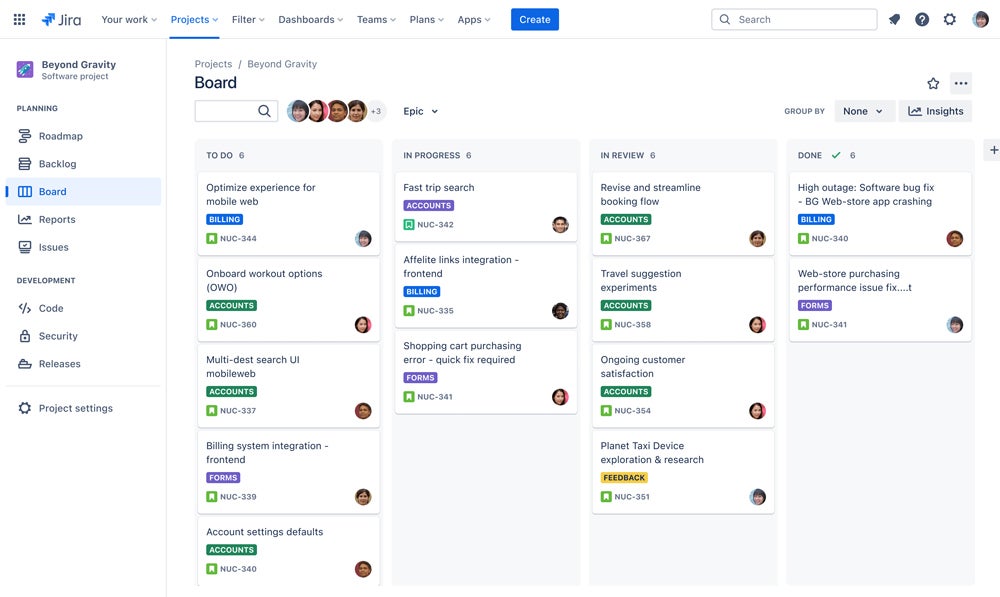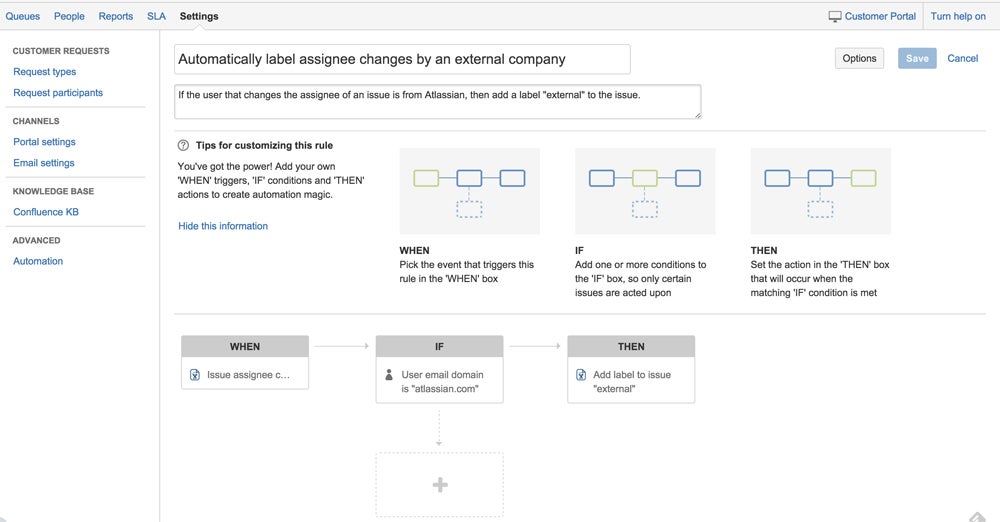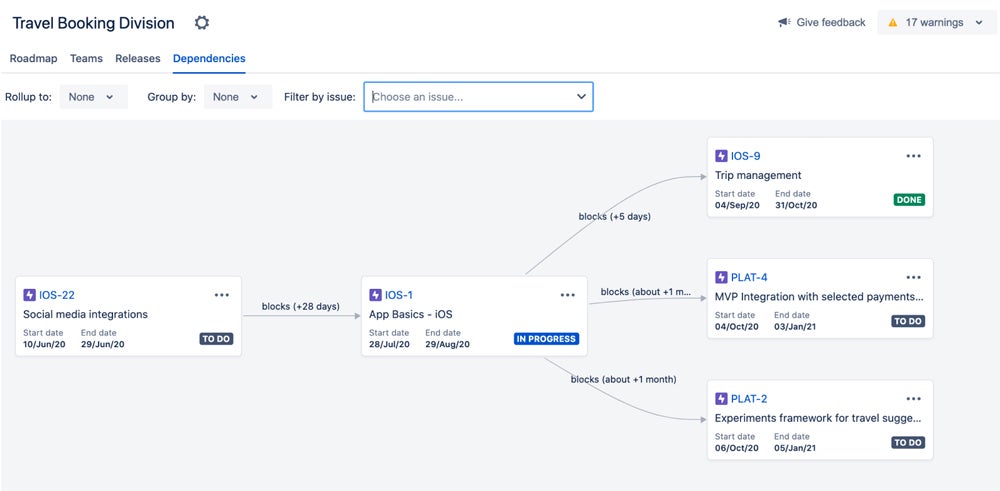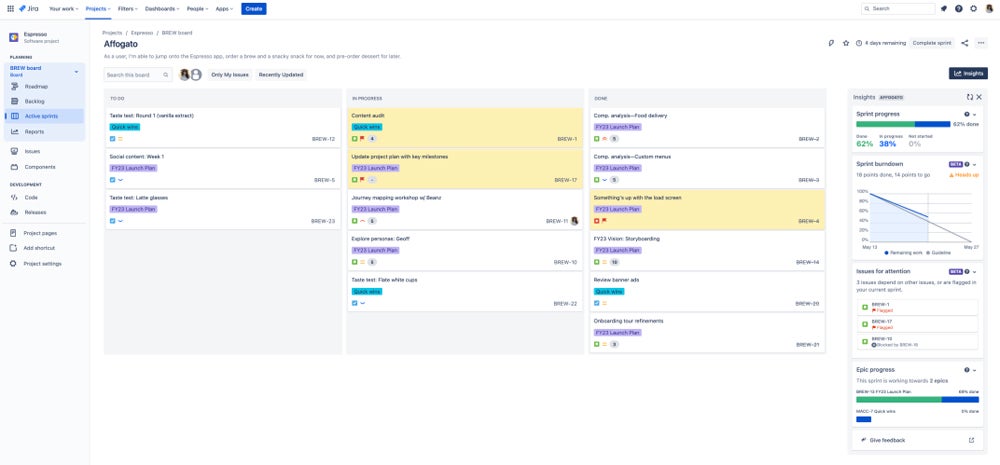Working in software involves a lot more than just writing code. Developers must deal with shifting end user requirements, collaborate with other departments like design and QA, handle maintenance such as debugging and refining past deployments, and much more. With so much asked of a functional dev team, project managers are often employed to help keep tasks organized and running smoothly.
This complete guide to software development project management is designed to provide an overview of what being the manager of a software project entails, how to choose a methodology for the project, and the best tools to help see it to completion.
What is project management in software development?
Software development is the process of designing, coding, testing, and maintaining applications or systems for specific tasks. A software project includes many other aspects that don’t involve writing a single line of code, including gaining input from internal and external stakeholders, collaboration between different development teams, keeping track of budget constraints, and meeting hard deadlines.
These non-coding tasks are essential for the success of commercial software projects, but they tend to be outside the scope of experience and interest for developers. This is where a project manager comes in. They are in charge of managing timelines, budgets, and resources, ensuring clear communication between stakeholders, and resolving any roadblocks.
SEE: What Is Project Management?
Project managers are employed in a variety of sectors, but in software development they will have additional technical expertise relating to the app, system, or other product being worked on, as well as the unique ways that developer teams function and interact. It is essential that they can communicate effectively with technical and non-technical personnel, as they are often responsible for sharing feedback and progress updates.
What does a project manager do in software development?
A project manager in software development is responsible for a number of tasks, including:
- Managing the software development life cycle, and ensuring smooth transitions between stages like coding, testing, and development.
- Defining project scope and requirements after consulting with the relevant stakeholders, such as external clients, internal leaders, and end users.
- Ensuring developers have the resources they need. For example, coordinating between front-end and back-end teams to confirm that interface components can be properly integrated.
- Updating clients or stakeholders by generating sprint progress reports and informing them of any scope changes.
- Identifying risks as early as possible, like potential delays, and managing them by reallocating developers or extending deadlines.
- Utilizing project tracking tools to their full potential and keeping them updated.
- Allocating and otherwise managing the budget or other resources.
Software development project management methodologies
Project management methodologies are structured approaches used to plan and execute projects effectively. There are a number out there, however, these are the most popular within software development teams:
Agile
Agile is an iterative methodology that focuses on delivering small, workable parts of software quickly through sprints and continuously improving based on feedback. It was created specifically for software projects but is now used by many different types of teams.
It is most ideal for development projects where requirements are expected to change frequently. For example, in mobile app development, agile allows developers to release early versions of the app, gather user feedback, and then refine the features over multiple sprints.
Agile is actually an umbrella term for many different types of management frameworks. Teams will tend to choose one and adapt it as best suits their requirements. The most popular for development teams are scrum, kanban, and extreme programming (XP).
Scrum
Scrum uses time-boxed sprints of about two to four weeks to deliver incremental updates. Scrum teams will have dedicated roles like Product Owner, Developers, and Scrum Master. Scrum Masters lead the project, ensuring everyone has an adequate understanding of the goals, roles, and responsibilities and that the necessary information is shared between members.
Scrum is most often used in projects requiring regular feature updates, like developing an e-commerce website. Each sprint might focus on building different sections, like the shopping cart or payment gateway.
Kanban
The kanban methodology revolves around the kanban board — a planning tool made up of columns that represent different stages of a workflow and moveable cards that represent tasks situated within them. It focuses on continuous delivery rather than sprints.
Kanban is often used in maintenance or support projects, as the boards can be useful for tracking ticket status from ‘to do’ to ‘in progress’ to ‘done.’
Extreme Programming (XP)
XP is one of the most specific agile frameworks for software engineering. It involves frequent releases to allow for a fast response to changing software requirements. Other key elements it prioritizes include pair-programming, unit testing, code simplicity, and test-driven development.
The XP methodology is best for startups or software projects where requirements evolve rapidly, and where code quality is critical. Developers can release a basic version of the software, continuously gather user feedback, and quickly adapt it so it remains responsive. This might be necessary for APIs, which will be integrated into other systems.
Lean
Lean is often misidentified as an agile methodology, but it is actually standalone. As it is based on manufacturing principles from Toyota Production Systems, its main focus is eliminating waste to ensure the project is completed efficiently and with minimum costs. The eight types of waste that lean manufacturing seeks to reduce are: motion, inventory, waiting, defects, overproduction, transportation, over-processing, and human potential.
Lean works best for start-up projects with limited resources, so speed and efficiency are key.
Waterfall
Waterfall is a linear and sequential methodology where one phase must be fully completed before starting with the next. Each phase, defined as requirements, design, implementation, verification, and maintenance, cascades into the next like a waterfall. The structured process improves accountability and makes it easy to stay within budget. A defined timeline also helps with deadlines and makes tracking progress clearer.
Waterfall is best suited to projects with well-defined requirements that are unlikely to change, because it involves taking a static approach from start to finish. For example, the development of an internal business application with fixed features may run most smoothly with a waterfall approach.
SEE: 8 Best Waterfall Project Management Tools & Software for 2024
How do you manage a successful project in software development?
Managing a project is a highly specialized and essential role, which is why project managers are in demand within many organizations. Doing it successfully involves training, experience, and time, which equips them to follow these best practices:
- Define the project scope: The more clearly defined the software project’s deliverables, goals, tasks, deadlines, and cost are, the easier it is for members to take charge of their responsibilities.
- Ensure communication: Dev teams can include technical and non-technical personnel that have different communication styles, but a good PM will facilitate collaboration regardless.
- Track progress and risks: By fully utilizing tracking software, project managers can keep tabs on what still needs to be done to complete project goals and identify any potential blockers.
- Assemble the right team: Each project has unique requirements, so choosing a team that will be most suitable for handling them, and identifying the need for training, is a skill unto itself.
- Be adaptable: As much as a project can be planned, new requirements, blockers, and other changes will undoubtedly crop up, so a strong PM must be prepared to adapt.
What is the primary goal of software project management?
The primary goal of software project management is to ensure the successful delivery of a project, which could be anything from designing operational software to creating an app or new website feature. The project’s output must be of high quality, built with clean code, and keep usability, reliability, and security in mind.
All phases of the software development life cycle must be planned, executed, and monitored to meet the defined scope, which will include deadlines and budgets. This should occur while also incorporating consistent feedback from end users and other stakeholders.
Tools for software development project management
There are many different tools to choose from for tracking and organizing tasks, but Jira was our top pick for agile project management because of its intentional design for that methodology. Below are a few examples of features in Jira that facilitate software development project management.
Scrum and kanban templates
Development teams can use pre-built and customizable workflows to adapt agile methodologies like scrum and kanban into their processes. Scrum templates can be used in coding and testing phases, where smaller sprints might focus on specific features or bugs. Kanban templates are useful in later phases of the software life cycle, like continuous deployment, helping to manage and prioritize work in progress.
Jira offers ready-made scrum and kanban templates to help managers standardize the project process, allowing teams to focus on productivity without having to set up tracking methods from scratch.

Automation
Quality project management tools allow users to automate repetitive, manual workflows in order to boost productivity. In software projects, they might trigger automatic code reviews once a developer submits a pull request by notifying reviewers, assigning tasks, and setting deadlines. Or they can automatically populate a bug report once it is identified during testing.
With Jira, managers can automate status updates, subtask creations, and issue escalations, with a no-code rule builder, ensuring updates occur in real-time.

Release and deployment management
Source control management tools track code changes, while CI/CD tools automate many of the processes necessary to get a code from commit into production, like testing and deployment. These can connect with the project management software to link code changes to specific tasks, allowing better visibility over progress.
In Jira, versions represent distinct points-in-time within a project to which issues can be assigned. The software will also create reports to aid with managing the version.

Dependency mapping
In software development, it is common for different elements to depend on each other. For example, a user interface can depend on a backend API, and integration tests depend on the completion of multiple components. Dependency mapping tools visualize these kinds of dependencies across projects, helping to identify blockers and bottlenecks before they become an issue.
Jira users can create maps of dependencies, which can be filtered by hierarchy level, groups, and issues. The colors of the arrows between the dependencies also clearly indicate errors or blockers.

Insights
Reporting and analytics tools included with project management software provide insights on key metrics such as cycle times, deployment frequencies, team performance, and more. This makes it much easier to generate reports and provide feedback to stakeholders.
Jira provides in-depth metrics and reporting tools that give project managers actionable insights into performance and project health. They can use burndown charts, velocity reports, and other dashboards to monitor progress and identify potential issues early, helping to adjust resources and timelines before problems escalate.

Benefits of project management software for development teams
- Simplifies the process of planning a project, breaking it down into sprints, and tracking its progress.
- Reduces the likelihood of going over budget or misallocating tasks leading to dev burnout.
- Improves collaboration with a centralized view of all code reviews, testing phases, bug fixes, etc.
- Decreases the frequency of blockers as they can be preempted with the software.
- Boosts coding productivity as team members have a clearer understanding of their responsibilities.
- Easy to generate reports and presentations of project updates for non-technical stakeholders.

